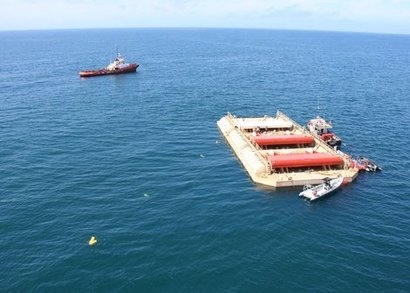
Breaking News
 Israel Used Palantir Technology In Its 2024 Lebanon Pager Attack, Book Claims
Israel Used Palantir Technology In Its 2024 Lebanon Pager Attack, Book Claims
 NATO Is a Menace, Not a Benefit, to America
NATO Is a Menace, Not a Benefit, to America
 MyPillow CEO Mike Lindell To Run For Governor Of Minnesota
MyPillow CEO Mike Lindell To Run For Governor Of Minnesota
 Charlie Kirk Murder Suspect Makes First Courtroom Appearance
Charlie Kirk Murder Suspect Makes First Courtroom Appearance
Top Tech News
 Build a Greenhouse HEATER that Lasts 10-15 DAYS!
Build a Greenhouse HEATER that Lasts 10-15 DAYS!
 Look at the genius idea he came up with using this tank that nobody wanted
Look at the genius idea he came up with using this tank that nobody wanted
 Latest Comet 3I Atlas Anomolies Like the Impossible 600,000 Mile Long Sunward Tail
Latest Comet 3I Atlas Anomolies Like the Impossible 600,000 Mile Long Sunward Tail
 Tesla Just Opened Its Biggest Supercharger Station Ever--And It's Powered By Solar And Batteries
Tesla Just Opened Its Biggest Supercharger Station Ever--And It's Powered By Solar And Batteries
 Your body already knows how to regrow limbs. We just haven't figured out how to turn it on yet.
Your body already knows how to regrow limbs. We just haven't figured out how to turn it on yet.
 We've wiretapped the gut-brain hotline to decode signals driving disease
We've wiretapped the gut-brain hotline to decode signals driving disease
 3D-printable concrete alternative hardens in three days, not four weeks
3D-printable concrete alternative hardens in three days, not four weeks
 Could satellite-beaming planes and airships make SpaceX's Starlink obsolete?
Could satellite-beaming planes and airships make SpaceX's Starlink obsolete?
WaveRoller sea-floor generator approaches commercial deployment

Finland's AW Energy is preparing to field a contender at scale – the Waveroller – which sits on the sea bed generating up to 1 MW.
Wave power does not seem to be a super fast-moving sector. We've seen plenty of fascinating ideas in this space, from jetty-mounted pump arms, to telescoping barrels, to elastic sea-bed flappers, and two different flavors of artificial blowhole generators, to name just a few, but nearly all remain at a pilot/prototype stage.
Which is annoying; wave energy is super-reliable, super-predictable, and available 24/7 at coastlines worldwide, which is right where a lot of people tend to like living. It should be a dream addition to the renewable energy mix. But it's moving so slowly that you have to wonder where the holdup is.
The idea behind the Waveroller struck when a diver noticed a large hatch on a shipwreck moving back and forth with considerable power as waves passed over it, and wondered if the same "surge" effect, which causes water particles to move back and forth in horizontal elliptical shapes close to the shore, could be harnessed to drive a hydraulic piston and generate electricity.
That light bulb moment was in 1993, when Michael Jordan was cementing Charles Barkeley's legacy as a ringless wonder in the NBA Finals, and The Simpsons was hitting its stride in season five. We're talking "who needs a Quickie-Mart" and Homer joining a barbershop quartet. That long ago.
It took until 1999 to test a proof of concept, then until 2005 before small-scale test farms were installed in Scotland and Ecuador, then until 2016 to get a design manufactured, assembled, tested and certified around Europe. The first commercial WaveRoller, a 350-kW unit, was connected to the grid in 2019, 800 m (2,600 ft) off the Portuguese coast at Peniche. Here it is, brand spankers, being towed out and deployed.

 First totally synthetic human brain model has been realized
First totally synthetic human brain model has been realized Mach-23 potato gun to shoot satellites into space
Mach-23 potato gun to shoot satellites into space

